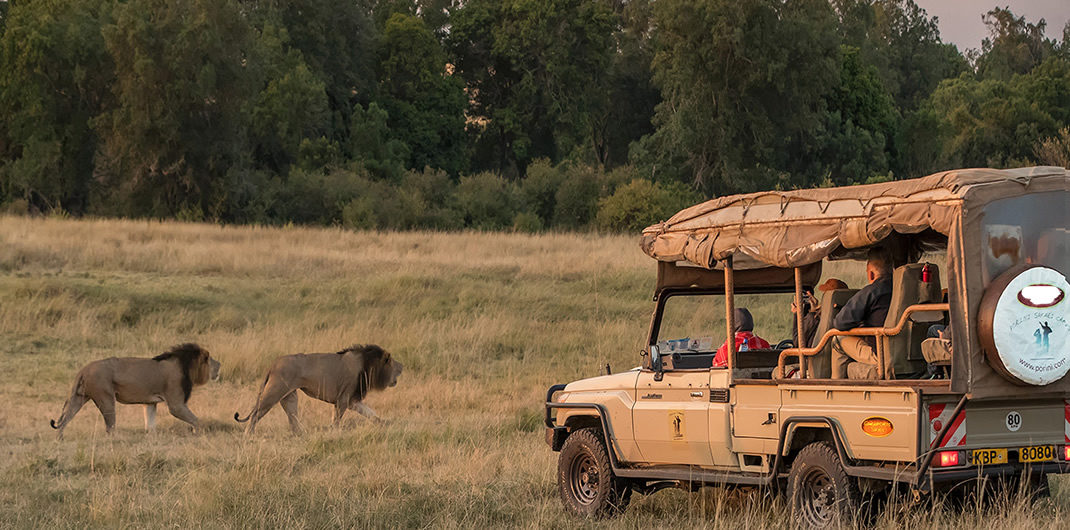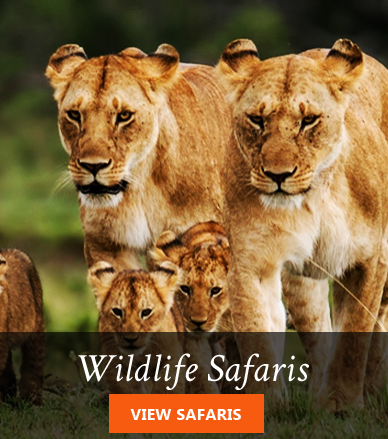Kenya and Tanzania Safari By Road – Making The Right Choices
Table of Contents
Even though a good number of tourists who travel to Kenya and Tanzania prefer to fly by using small engine airplanes to visit the various parks and wildlife reserves, road travel still remains the most common and most affordable means of moving around while taking safari trips in Kenya and Tanzania. The tourists who opt for fly-in trips are the more affluent ones, or those who might not have much time that is required for a good road safari.
This article is for anyone planning to visit Kenya and Tanzania, and intends to travel by road while on safari. The points listed should help them make better choices and decisions, especially at the initial stages of planning. If you are going to be traveling by road, you need to
Pick Your Safari Destinations Well
One of the most important things is to ensure a well-designed itinerary. To see the wild animals, you need to go where they are, which is in the wilderness – mainly national parks, game reserves or private conservancies. Do you have particular animals on your check-list you would like to see? If so, find out which park or reserve offers you the best chance of seeing that particular animal. Are you willing or ready to drive long distances to your destination on any particular day? If so , pay attention to the distances in question. For example starting from Nairobi or Arusha, the closest parks (Nairobi National Park and Arusha National Park) are about half an hour’s drive away. From Nairobi to Samburu Game reserve, it would take about 6 hours of driving. And from Arusha to Serengeti, you would need about 8 hours. In fact, to reach some of the most remote parks in Kenya and Tanzania, if starting from Nairobi or Arusha, you may need to drive a couple of days. Such remote parks are rarely or never included in the itineraries of normal packaged tours, though.
Pick The Right Type of Safari Vehicle and Guide
The vehicle used for these kinds of safaris is usually a 4WD safari jeep or a minibus. Some people refer to these vehicles as 4×4 landcruiser or safari minivan. Whatever, the case may be, the safari vehicle is usually driven by a driver, who also serves as a safari guide. Most safari guides are qualified, well-trained experienced individuals. Some may not be. You travel from one park to the other in these vehicles and also do game drives – that is what animals while riding in the same vehicles.
Most safari itineraries covering Kenya and Tanzania are often designed to run in circular tours. That means you visit various and different parks and reserves, and then return to the starting point on the last day. The same driver-guide drives the vehicle during the whole safari. It is important to get the right type of safari vehicle for your safari.
Think of Distances in Hours, not Kilometres or Miles
Safari travel ‘distances’ in Kenya and Tanzania are best given in hours. Not in the usual kms or miles. This is because road conditions may vary from place to place and from time to time. For example, if traveling during the wet rainy season, your driver might have to drive slower on the murram roads.
The usual descriptions such as ‘dirt road’, ‘tarmac road’, ‘poor road’ etc. may indicate how much the vehicle will shake when driving there, but they do not necessarily say how fast, or slow you would be driving.
Long Driving Hours – Six Hours Drive on The Road on Safari
At the time of working on your safari itinerary for Kenya and Tanzania, pay attention to the duration of travel between one park and then next. It is recommend that you look for an itinerary that has a maximum of 6 hours on the road, on any given day. And think twice before booking an itinerary that has many such long long laps. Six hours on poor roads is quite enough for most people. And spending much of your trip traveling between the parks means less time for actually seeing the animals.
Laps that are longer than 6 hours are seen in some safari itineraries. Such itineraries may for example take you from Amboseli National park, to Masai Mara in Kenya, or from the city of Arusha straight to Serengeti in Tanzania, but we strongly suggest that you avoid them if possible.
Before booking a safari, take a good look at the itinerary offered to you. If the travel distances seem long to you, then you may consider choosing another itinerary. You may need to speak to another travel company, but it’s worth the trouble if it means you get a better safari.
Consider The Travel Time Between The Safari Parks
While working on your preferred safari itinerary, and if you do not have many days for your trip, you may choose to visit fewer parks. This would help to reduce the time spent traveling between them. That you are left with more time for watching the animals inside those parks that you visit, rather than driving in between.
However, if seeing the country is as important to you as seeing the animals, you may choose to visit more parks. You get to see more places that way, and you will spend more time traveling the country. In Kenya, most traveling between parks is done in the countryside or rural areas, where you don’t see much wildlife. In Tanzania, you travel inside parks to a higher extent, and may see wildlife when traveling to your next destination.
Consider Combining Safaris to both Kenya and Tanzania
Some safaris by road visit both Kenya and Tanzania. This is just one way of trying to see a little bit more in one tour. Even if we think that most such itineraries are may be too short (in days) to allow you to get the best of Kenya and Tanzania in terms of safaris, they may be reasonable to some safari-goers.
Stops en route On Safari – Sometimes to Your Advantage
When travelling the roads, you stop every once in a while. This is for a chance to stretch your legs and to visit the bathroom (the quality and cleanliness for the washrooms will vary from good to poor). Typical places for such stops may also offer some sightseeing opportunities. For example, in Kenya, such would be Great Rift Valley view points en route between Nairobi and Masai Mara. Another popular stop over location in Kenya is Thomson’s Falls. It is used by travelers between Samburu Game Reserve or Aberdare National Park, going to or coming from Lake Naivasha or Lake Nakuru in Kenya. In Tanzania, a popular stop over is at the Olduvai Gorge between the Ngorongoro Crater and Serengeti in Tanzania. You may also stop at roadside souvenir shops.
Some Wild Animals en route – Bonus
How much wildlife you may be able to see when travelling from one destination depends a lot on which area you are in. For, example, traveling through rural areas usually means little or no wildlife. On the other hand, sparsely populated country may have a few stray wild animals along the way. Don’t lose heart if traveling towards a major park, such as Maasai Mara, without seeing much. Once you get close to the park, or inside it, there will be hundreds of wild animals to compensate. When traveling within parks, as is the case with most Tanzania safari itineraries, there may be a lot to see, even along the way.
Birds, not least birds of prey, may be seen along most routes. However, it takes some training to spot and identify birds when driving at 80km/ 50 mi per hour, but if you are a keen birder, that probably won’t stop you from spotting them.
Always Prepare for the unfamiliar Road Conditions
You will travel on both tarmac and bush roads. A few tarmac roads are good, while most are fair; they allow for good speed, but there may be potholes etc. Bush roads may be dirt, gravel, sand etc., and you should expect slower and less comfortable progress than on tarmac. Some roads may be fair, but most are not very good, being bumpy, corrugated and dusty. Some roads are really bad, often due to erosion and poor maintenance. Bush roads in remote areas may be just passable. River crossings may not be possible at all during rainy seasons.




Leave a Reply